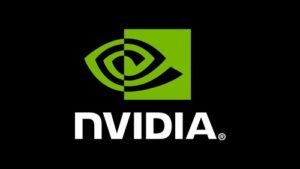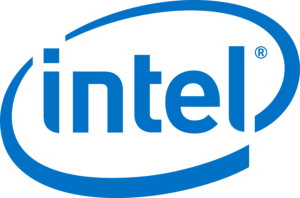 The following is an updated version of a story on the Nvidia-Arm deal that appeared here yesterday — editor
The following is an updated version of a story on the Nvidia-Arm deal that appeared here yesterday — editor
On the heels of potential regulatory problems in China and Europe for Nvidia’s planned Arm acquisition, another press report, from Bloomberg, states that UK regulators are considering blocking the $40 billion takeover on the grounds of national security risks.
It’s not known what those risks may be, but the Bloomberg story said a report by the UK government’s Competition and Markets Authority “contains worrying implications for national security, with the country now leaning towards blocking the deal,” according to an article in Data Centre Dynamics.
Another story, from CNBC, stated that “It’s unclear how U.K. national security would be affected if Arm goes from being Japanese-owned to U.S.- owned, but governments have come to view semiconductor technology as a vital asset amid the global chip shortage.”
The terms of the acquisition call for the deal to be closed by next March, 18 months after it was announcement last September, and allows Nvidia and Arm options to extend the close to September of next year. If regulatory approvals have not been secured by then, the companies can cancel the attempted purchase.
Nvidia released the following statement: “We continue to work through the regulatory process with the U.K. government. We look forward to their questions and expect to resolve any issues they may have.”
Should the deal fall through it would be a rare miscue by Nvidia, which to all appearances has been on a several-years-long run of success, issuing a steady stream of successful products that have driven revenue and profit growth. Its share price, at about $5 in early 2015, today topped $200, near it’s all-time high achieved earlier this month.
These latest developments follow a report by IT publication The Information stating that regulators in China have not yet begun a formal review of the deal, which was announced last September.
 “Regulators have had informal discussions with both companies, but nothing concrete has emerged,” stated an article in today’s Data Centre Dynamics on the development. “Regulatory approval in the country was expected to be difficult due to the ongoing trade war with the US, and the fact that if Arm was owned by an American company, it could be subject to … export limitations.”
“Regulators have had informal discussions with both companies, but nothing concrete has emerged,” stated an article in today’s Data Centre Dynamics on the development. “Regulatory approval in the country was expected to be difficult due to the ongoing trade war with the US, and the fact that if Arm was owned by an American company, it could be subject to … export limitations.”
The acquisition would be a significant move by Nvidia in rounding out its microprocessor product portfolio. The Santa Clara, CA-based company, having achieved global leadership in GPUs, wants to add Arm CPUs to an offering that, combined with Nvidia’s 2020 acquisition of high performance networking company Mellanox, could enhance Nvidia’s growing presence in data center servers, HPC and supercomputing.
 The Data Centre Dynamics story also reported that the deal “is also behind schedule in Europe – but because Nvidia has yet to submit its paperwork to the European Commission,” according to a story in The Telegraph. “That body has now recessed for a summer break, and is unlikely to look at the acquisition before September at the earliest. A decision could then take more than six months,” stated the publication.
The Data Centre Dynamics story also reported that the deal “is also behind schedule in Europe – but because Nvidia has yet to submit its paperwork to the European Commission,” according to a story in The Telegraph. “That body has now recessed for a summer break, and is unlikely to look at the acquisition before September at the earliest. A decision could then take more than six months,” stated the publication.
The news regarding Chinese regulators comes amidst recent attacks by the PRC on some of China’s largest technology companies. This morning, Tencent Holdings stock fell after a state-owned Chinese newspaper attacked online gaming as “opium for the mind,” “fueling investor concerns that the companies’ popular games could be swept up into a broader regulatory crackdown,” reported The Wall Street Journal.
 “In recent months, China has intensified scrutiny of big technology companies over issues such as data security, monopolistic behavior and financial stability, sparking a steep selloff in the shares of companies like Tencent and Alibaba Group Holding Ltd.,” the Journal stated.
“In recent months, China has intensified scrutiny of big technology companies over issues such as data security, monopolistic behavior and financial stability, sparking a steep selloff in the shares of companies like Tencent and Alibaba Group Holding Ltd.,” the Journal stated.
All this comes during intensifying trade antagonism between China and the U.S., much of it focused on technology. Nvidia’s ability to navigate this difficult and unpredictable trade and geopolitical landscape will be a major test of its communications and government relations skills.
 Interesting, too, are the evolving product portfolio strategies of the major chip companies. Having seen over the past decade near blanket dominance in HPC-class servers of Intel CPUs encroached upon and augmented by GPU and FPGA accelerators – what HPC industry analyst Addison Snell, CEO of Intersect360 Research, has called “technology disaggregation” – we now may be seeing an attempt at re-aggregation by the big chip companies. That is, GPUs, FPGAs, Arm and custom AI chips are increasingly used in tandem with CPUs for advanced computing workloads. But instead of combinations of chips from combinations of vendors, those vendors are moving to become single-source providers of multiple architectures.
Interesting, too, are the evolving product portfolio strategies of the major chip companies. Having seen over the past decade near blanket dominance in HPC-class servers of Intel CPUs encroached upon and augmented by GPU and FPGA accelerators – what HPC industry analyst Addison Snell, CEO of Intersect360 Research, has called “technology disaggregation” – we now may be seeing an attempt at re-aggregation by the big chip companies. That is, GPUs, FPGAs, Arm and custom AI chips are increasingly used in tandem with CPUs for advanced computing workloads. But instead of combinations of chips from combinations of vendors, those vendors are moving to become single-source providers of multiple architectures.
Cases in point: the world’s second and third most powerful supercomputers, Summit and Sierra at Oak Ridge National Laboratory and Lawrence Livermore National Laboratory, respectively (both installed in 2018), are powered by IBM CPUs and Nvidia GPUs. But next-gen, state-of-supercomputing exascale systems will use chips from single vendors. Frontier, scheduled to be delivered to Oak Ridge National Laboratory later this year, will be powered by AMD CPUs and GPUs. Aurora, slated for Argonne National Laboratory, will be equipped with Intel “Sapphire Rapids” Xeon CPUs and Intel’s “Ponte Vecchio” GPUs.
Thus, the Nvidia-Arm move would be in keeping with the broadening chip choices of AMD and Intel, both of which are building out CPU-GPU product strategies (Intel also has FPGAs and AMD will likely soon have them, assuming its acquisition of Xilinx is approved). The result could be performance advantages from tighter multiprocessor integration. And it could mean expanded market reach and tighter account control for the chip vendors whose customers rely on only them for of their chip needs.




